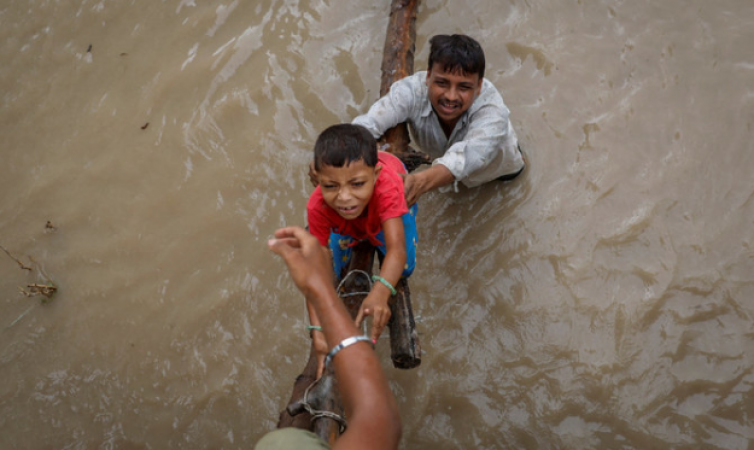
New Delhi: Record monsoon rains caused massive waterlogging, road cave-ins, collapsed homes, and gridlocked traffic in large parts of northern India, killing more than 100 people over a two-week period, officials said Thursday. As a result, schools and colleges were closed.
In the worst-hit state, the mountainous Himachal Pradesh, where cars, buses, bridges, and homes were washed away by swirling flood waters, at least 88 people died, 42 of them in the past five days, and more than 100 were injured, according to a state government statement. Nearly 310 miles to the north of New Delhi is the area.
Shishir Singh, a spokesman for the state government, reported that since Wednesday, twelve people have perished in Uttar Pradesh due to rain-related incidents.
Also Read: FTC Drops Bombshell: Halts Microsoft's Mega Acquisition of Activision
According to Singh, nine of them drowned, two were killed by lightning, and one was bitten by a snake.
According to officials, four people were killed in the region of Kashmir that India controls, while one person died in New Delhi.
Nearly 300 people, mostly tourists, had been trapped in the Himachal Pradesh state's Chandertal region since Saturday. Helicopters were used by authorities to rescue them. According to the government, they included seven ill people who were airlifted on Tuesday.
According to the state emergency operation centre, nearly 170 homes have collapsed and another 600 have suffered partial damage as a result of the state's heavy rains and landslides.
Also Read: PM Modi Becomes First Indian PM to Receive France's Highest Civilian Award
The flooding of residential areas near the Jamuna River in New Delhi resulted in the evacuation of thousands of people from low-lying areas as roads, automobiles, and homes were submerged.
On Thursday morning during rush hour in New Delhi, dozens of cars were blocked by water sheets, causing chaos in the flow of traffic.
According to a statement from the office of New Delhi's top elected official, Arvind Kejriwal, the water level of the Jamuna River, which flows through the Indian capital, surpassed a 40-year record and reached 207.71 metres (681.5 feet) on Wednesday evening.
According to the statement, authorities have relocated nearly 30,000 people to relief camps and also transformed some schools into relief camps in the severely affected areas. In the eastern parts of the Indian capital, hundreds of people have also taken refuge under overhead road bridges with their livestock.
Factory owner Rajesh Singh was stranded with his motorbike for hours because floodwater had blocked both sides of the road close to the river bank. In the past 22 years, "I have never seen anything like this."
The river level has increased because of abnormally high water discharge from the Hathni Kund barrage in the neighbouring state of Haryana, according to Kejriwal, despite the fact that New Delhi hasn't received much rain in the last two days.
More intense rains are expected to fall in the north in the ensuing days, according to India's weather agency. It claimed that the country has already experienced about 2% more rainfall than usual due to monsoon rains.
Also Read: El Nino is threatening rice crops after the Ukraine War disrupted grain supplies
During the monsoon season, which lasts from June to September and brings the majority of South Asia's annual rainfall, India frequently experiences severe floods. Rain-fed crops planted during the season depend on the rains, but they frequently sustain significant damage.
According to scientists, climate change and global warming are making monsoons more unpredictable, which is causing more frequent landslides and flash floods in India's Himalayan north.